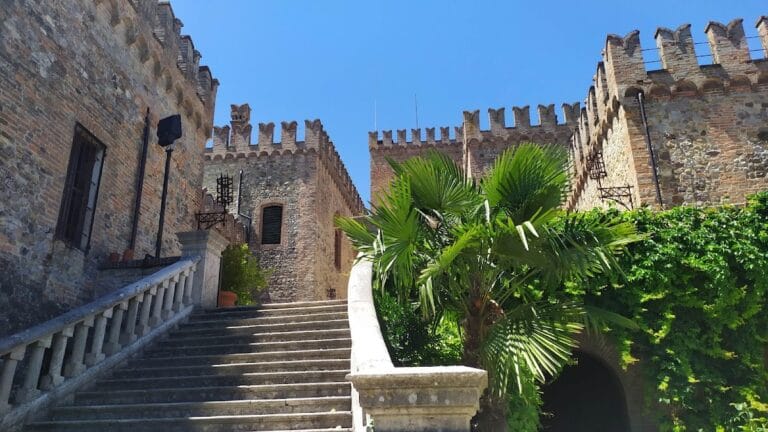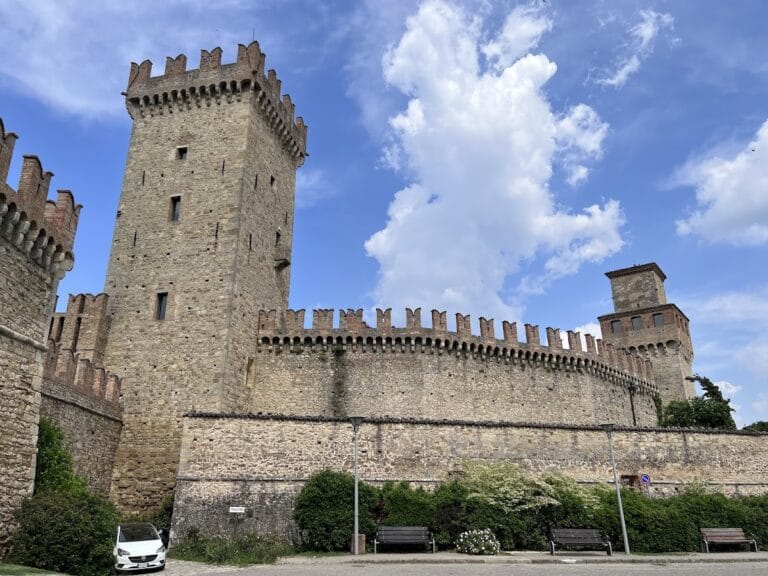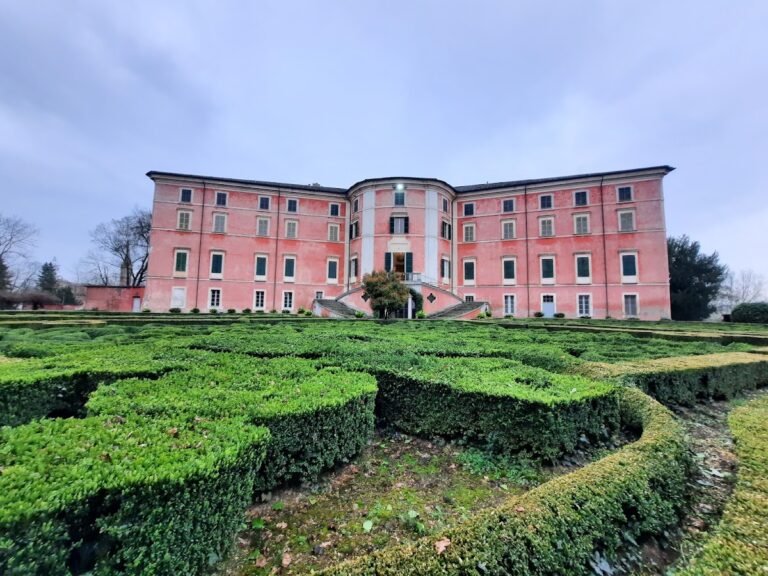Castle of Contignaco: A Medieval Stronghold in Salsomaggiore Terme, Italy
Visitor Information
Google Rating: 4.6
Popularity: Low
Google Maps: View on Google Maps
Official Website: shop.castellodicontignaco.it
Country: Italy
Civilization: Unclassified
Remains: Military
History
The Castle of Contignaco stands near the hamlet of Contignaco within the municipality of Salsomaggiore Terme in Italy. This medieval stronghold was originally built in the early 11th century by Margrave Adalberto I, a member of the Obertenghi family who founded the settlement of Contignaco and became the ancestor of the Pallavicino lineage.
During its early centuries, the castle served a vital strategic function, overseeing control of the important salt pans around Salsomaggiore, essential for both economic and military reasons. The fortified keep adjacent to the castle entrance, dating from around 1030, remains one of the earliest surviving parts of the structure and illustrates the site’s long-standing defensive role.
In the early 14th century, the castle experienced a significant conflict when the Pallavicino family surrendered it in 1315 after a fierce attack by forces loyal to the Aldighieri family of Parma, who were related to the famed poet Dante Alighieri’s lineage. This confrontation laid the groundwork for future alliances, notably in the mid-15th century when a marriage united the Aldighieri of Contignaco with the Pallavicino family through Giberto and Agnese, daughter of Rolando Pallavicino.
The Pallavicino family line that controlled the castle ended in 1537 with the death of Gian Matteo. Following this, the castle came under the authority of the ducal administration of Milan, which transferred the fief to Sforza Pallavicino. Ownership later passed through his sister Ottavia and then to her niece, Isabella Gambara. When Isabella died in 1633, the castle reverted to ducal control and by 1660, Duke Ranuccio II Farnese bestowed it upon his cousin Anna Maria Farnese of Latera, the wife of Count Antonio Maria Terzi of Sissa.
After the male branch of the Terzi family ceased to exist, the castle returned to the administration of Parma’s duchy in 1760. Two years later, Duke Philip of Bourbon sold it to Marquis Silvestro Antonio Ponticelli of Sasso, whose descendants inherited the property. By the 19th century, the castle had fallen into decline and was sold after 1861 to Captain Alberto Leva, who repurposed it into an agricultural estate focusing on wine production. Later, the property was acquired by Luigi Boschi and subsequently passed through marriage to the Vicini family. Today, after extensive restoration, the castle is owned by the Romanini family and forms part of a regional association of prominent historic castles.
Remains
The Castle of Contignaco features a roughly square layout raised on a hill, constructed of stone and organized around a central courtyard of the same shape. The castle’s outward appearance is marked by its stone walls, which have undergone multiple phases of renovation across the centuries. The number of windows is limited, enhancing its fortress-like facade, with windows predominantly present on the eastern side.
One of the defining architectural elements is the medieval keep, or “mastio,” built around 1030. This tower has a square base and rises more than 30 meters in height, standing beside the main entrance and dominating the surrounding landscape. The keep’s substantial height and commanding position reflect the castle’s original strategic role in surveillance and defense.
Encircling the castle is a large park containing a variety of venerable trees, including oaks, cedars, cypresses, and laurels, with the oldest tree being a massive oak more than a century old whose trunk diameter exceeds two meters. This verdant setting adds an element of natural heritage tied closely to the castle’s long history.
Within the castle, several rooms remain accessible and offer a glimpse into its past functions. The Sala delle Feritoie, or Arrow Slits Hall, is named after narrow openings once used to shoot arrows while remaining protected. The Sala degli Stemmi, or Coat of Arms Hall, likely housed heraldic symbols linked to the castle’s noble owners. The Sala del Camino, or Fireplace Hall, suggests a more domestic or ceremonial use with its hearth. Additionally, a small prison is located at the base of the tower, demonstrating the castle’s role in local governance and justice.
These features, preserved or restored, provide valuable insight into the castle’s military, administrative, and residential functions over several centuries.










